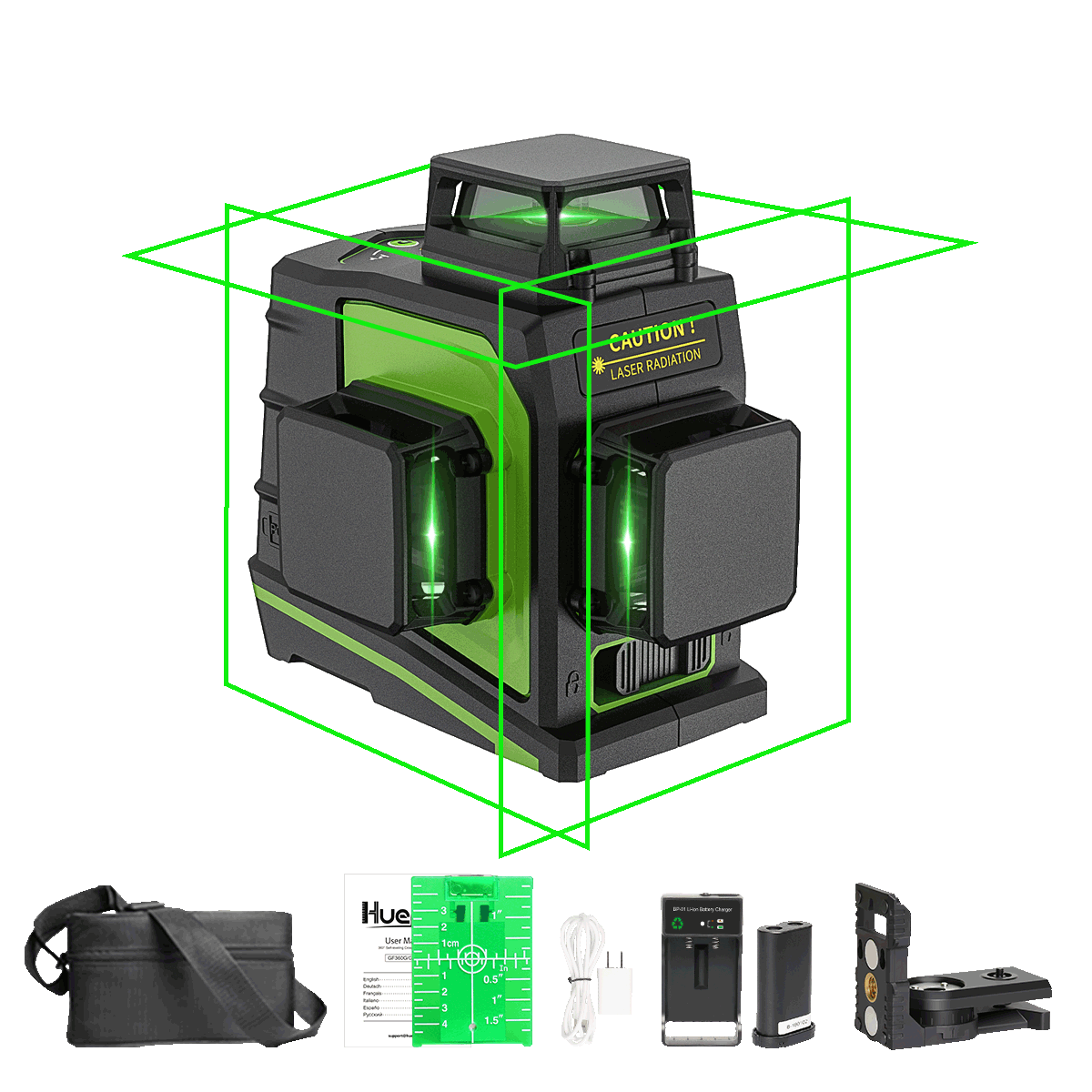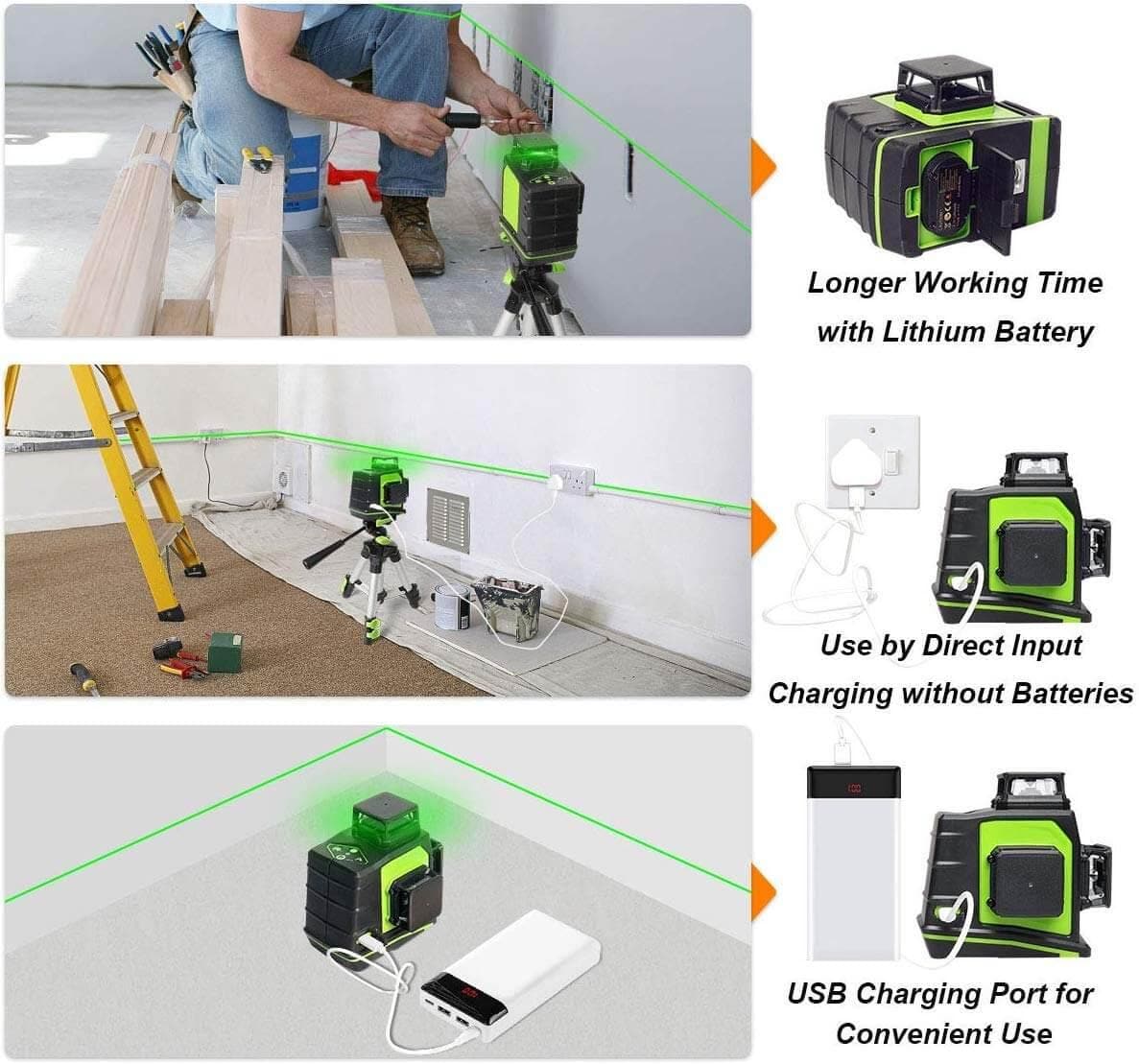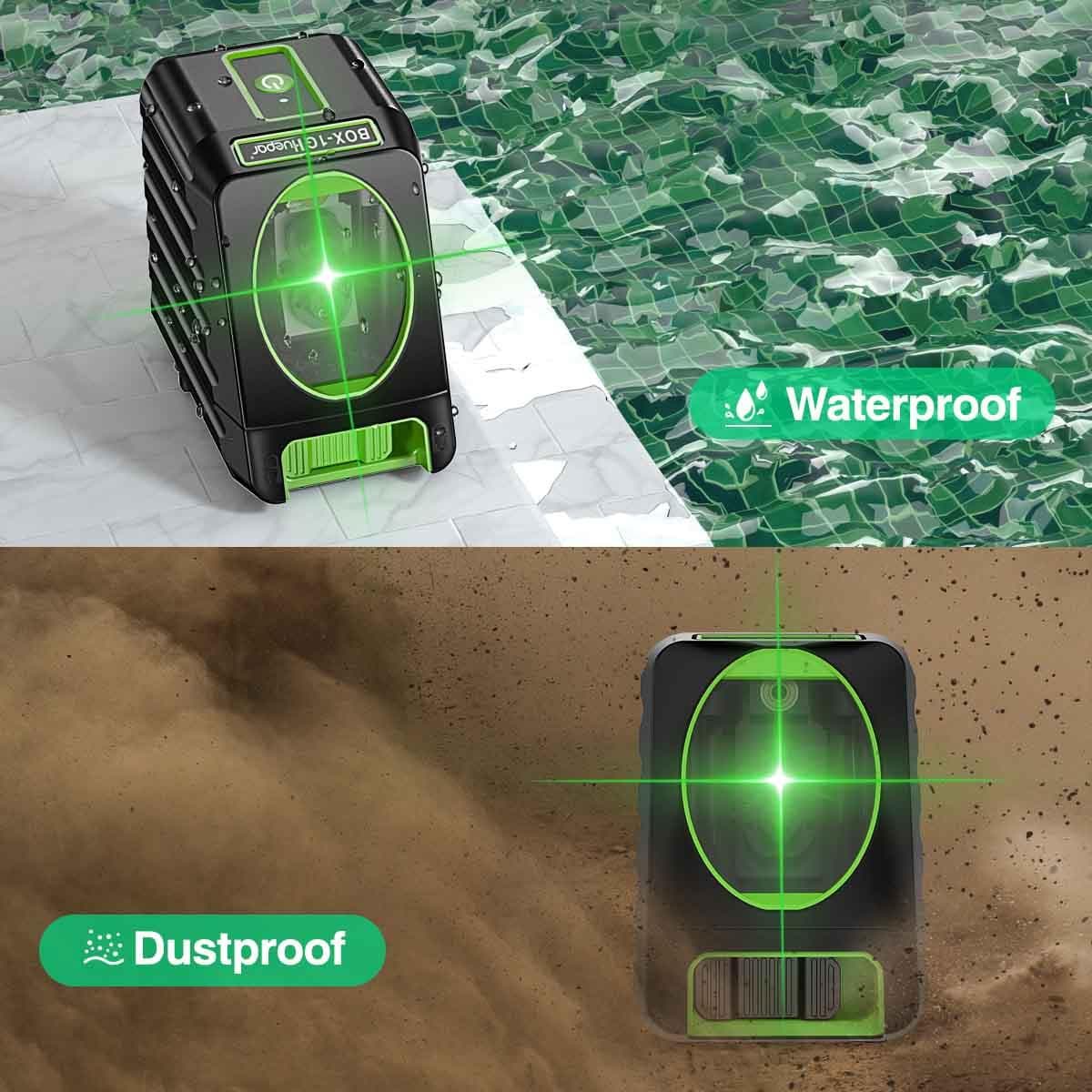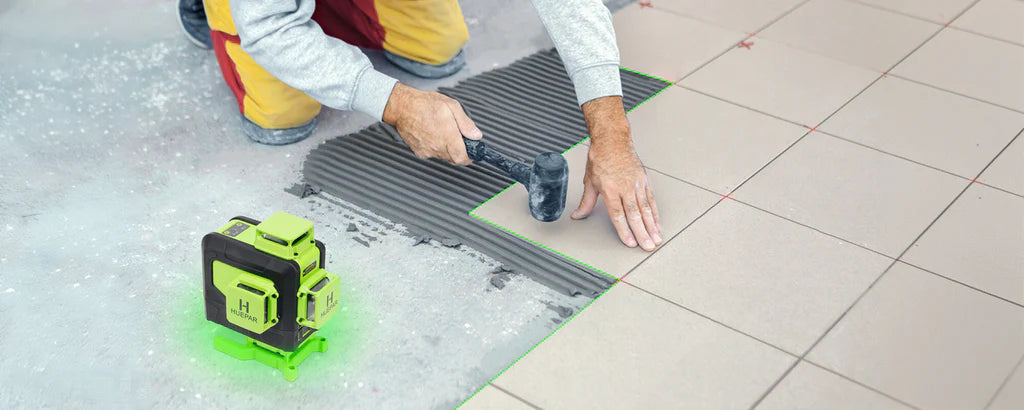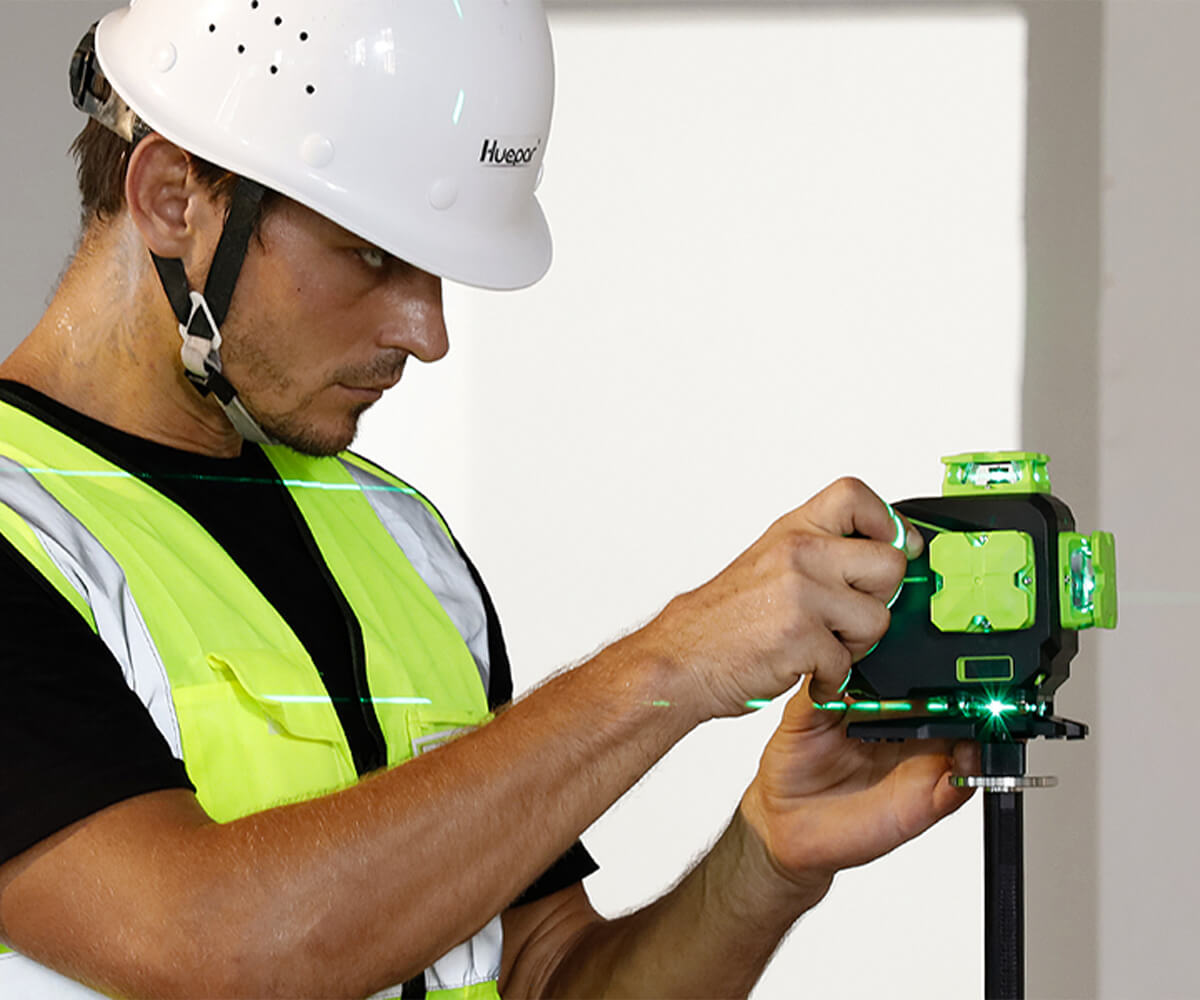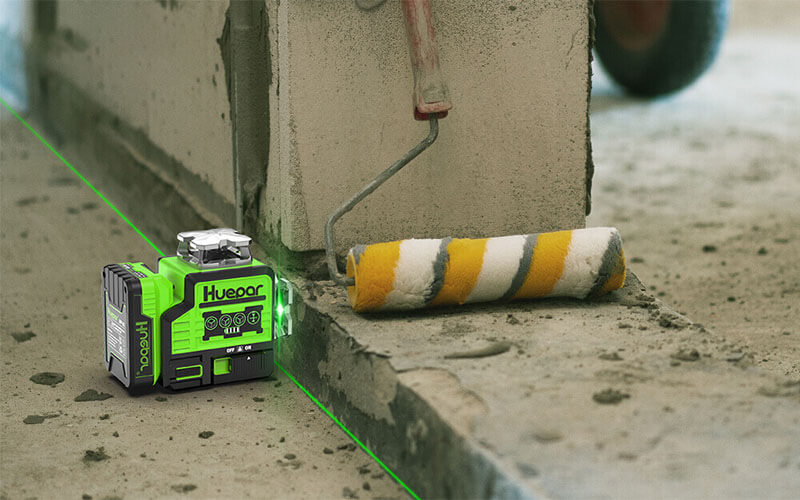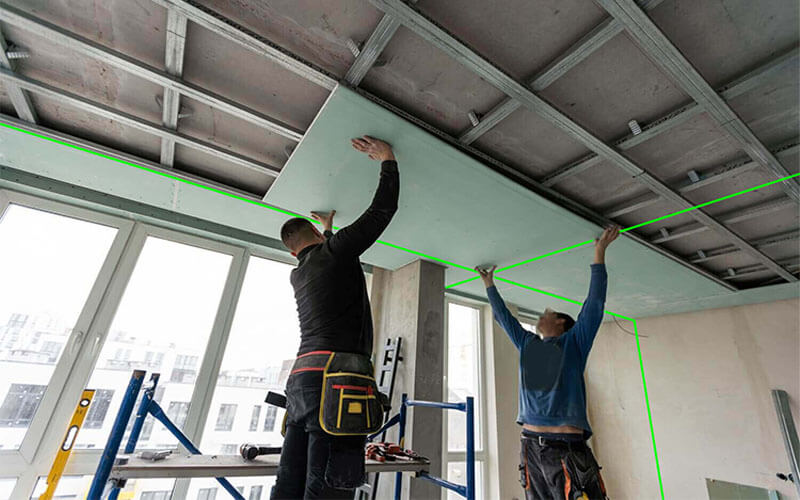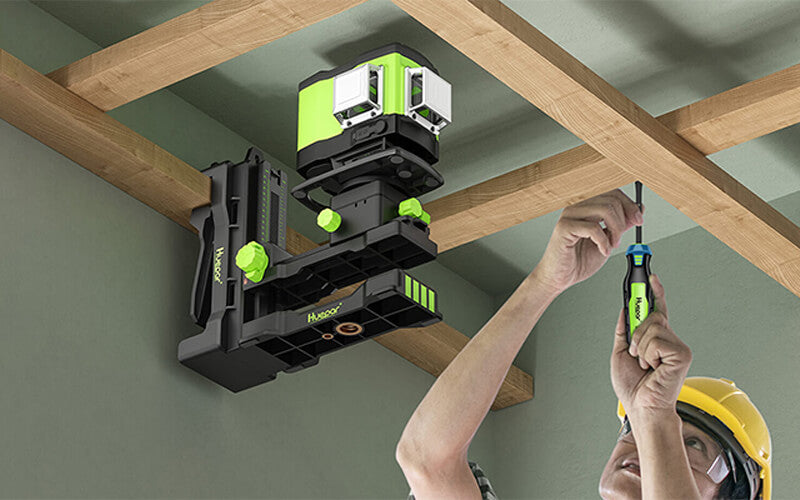
Präzision meistern: Ein Leitfaden zur Auswahl der besten 3D-Laser-Wasserwaagen
Grundlegendes zu Laser-Wasserwaagen
Was sind Laser-Wasserwaagen?
Laserwasserwaagen sind Werkzeuge, die bei Bau- und Heimwerkerprojekten verwendet werden. Sie projizieren mit einem Laserstrahl eine gerade Linie auf Oberflächen. Dies trägt dazu bei, die Genauigkeit beim Ausrichten und Nivellieren von Objekten sicherzustellen. Es gibt verschiedene Arten, aber alle dienen dazu, präzises Arbeiten zu erleichtern. Vom Aufhängen von Bildern bis zum Auslegen komplexer Designs sind Laserwasserwaagen der Schlüssel zur Genauigkeit. Ihre Verwendung reicht von einfachen Aufgaben bis hin zu hochpräzisen Anwendungen in verschiedenen Bereichen.

Die Entwicklung der Laser-Wasserwaagen: Von manuell zu 3D
Laser-Wasserwaagen haben seit ihren Anfängen eine lange Entwicklung durchgemacht. Die ersten Werkzeuge waren einfache, manuelle Geräte. Sie verwendeten Lote oder Wasserwaagen, um gerade Linien zu finden. Im Laufe der Zeit sind diese Werkzeuge komplexer und präziser geworden. Heute gibt es 3D-Laser-Wasserwaagen . Diese Werkzeuge zeichnen Linien auf allen Ebenen. Sie machen Aufgaben wie das Ausrichten und Nivellieren zum Kinderspiel. Der Sprung von manuell zu 3D hat die Arbeitsweise von Profis verändert. Er hat zu schnelleren, genaueren Ergebnissen sowohl bei Bau- als auch bei Heimwerkerprojekten geführt.
Verschiedene Arten von Laser-Wasserwaagen
Kreuzlinienlaser: Wann werden sie eingesetzt?
Kreuzlinienlaser sind für kleinere Projekte im Innenbereich sehr praktisch. Sie können sie zum Aufhängen von Bildern, Anbringen von Regalen oder Verlegen von Fliesen verwenden. Sie projizieren zwei sichtbare Linien, die sich kreuzen und so eine genaue Ausrichtung ermöglichen. Diese Art von Wasserwaage ist perfekt für Heimwerkerarbeiten und Renovierungen. Sie bietet eine einfache Handhabung und klare Sicht. Wenn Präzision entscheidend ist, die Aufgabe aber nicht komplex ist, ist eine Kreuzlinienlaserwasserwaage die beste Wahl.
4D-Laserwasserwaagen: Was sie auszeichnet
4D-Laser-Wasserwaagen sind eine Weiterentwicklung der Standard-3D-Versionen. Sie senden Laserlinien nicht nur horizontal und vertikal, sondern auch in 360 Grad aus. Dadurch entsteht in jeder Richtung ein Fadenkreuz-Lasermuster. Das macht sie einzigartig:
- Vollständige Raumaufteilung : 4D-Ebenen können die Aufteilung eines gesamten Raums auf einmal ermöglichen und so die Einrichtungszeit verkürzen.
- Genauigkeit : Diese Werkzeuge sind präzise und bieten Genauigkeit für komplexe Projekte.
- Benutzerfreundlichkeit : Mit mehreren Ebenen wird die Ausrichtung einfacher, ohne das Werkzeug zu bewegen.
- Multifunktional : Sie verfügen oft über zusätzliche Funktionen wie Bluetooth-Konnektivität.
4D-Modelle eignen sich am besten für Profis, die umfassende All-in-One-Tools für große Räume benötigen.
Warum 3D-Laserwasserwaagen ideal für Präzisionsarbeiten sind
3D-Laserwasserwaagen sind die Werkzeuge der Wahl für Präzision. Sie projizieren Punkte und Linien auf alle Oberflächen. So erhalten Sie genaue Messungen aus jedem Winkel. 3D-Wasserwaagen sind perfekt für detaillierte Projekte. Sie können schnell und trotzdem präzise arbeiten. Sie sind außerdem einfach zu bedienen und einzurichten. Arbeiten wie das Installieren einer Decke oder das Verlegen von Fußböden werden einfacher. Bei komplexen Layouts sind diese Wasserwaagen ein Muss. Sie sparen Zeit und verhindern kostspielige Fehler. Mit einer 3D-Laserwasserwaage erzielen Sie jedes Mal Genauigkeit.
Auswahl der richtigen 3D-Laserwasserwaage
Wichtige Merkmale, auf die Sie bei 3D-Laser-Wasserwaagen achten sollten
- Genauigkeit : Suchen Sie nach Modellen mit hoher Präzision. Dies ist für qualitativ hochwertige Ergebnisse von entscheidender Bedeutung.
- Selbstnivellierung : Wählen Sie zur Vereinfachung eine Wasserwaage, deren Position automatisch korrigiert werden kann.
- Akkulaufzeit : Wählen Sie ein Modell mit langer Akkulaufzeit, um häufiges Aufladen zu vermeiden.
- Haltbarkeit : Stellen Sie sicher, dass die Wasserwaage den Bedingungen auf der Baustelle standhält.
- Reichweite : Überprüfen Sie den Arbeitsbereich. Dies ist bei großen Projekten von entscheidender Bedeutung.
- Montageoptionen : Überlegen Sie, wie die Wasserwaage montiert wird. Dies wirkt sich auf ihre Nutzbarkeit aus.
- Sichtbarkeit des Lasers : Entscheiden Sie sich für Wasserwaagen mit hellen Lasern. Diese sind leichter zu erkennen.
- Zusätzliche Funktionen : Achten Sie auf Extras wie Bluetooth oder Fernbedienung.
Vergleich der besten 3D-Laser-Nivelliermodelle
Bei der Auswahl einer 3D-Laserwasserwaage ist es wichtig, die Modelle zu vergleichen. Beachten Sie diese wichtigen Punkte:
- Genauigkeit : Überprüfen Sie, wie präzise jedes Modell ist. Dies ist für qualitativ hochwertige Ergebnisse von entscheidender Bedeutung.
- Reichweite : Achten Sie auf die Arbeitsentfernung. Eine größere Reichweite ist für große Standorte besser.
- Akkulaufzeit : Eine längere Akkulaufzeit bedeutet weniger Ausfallzeiten.
- Haltbarkeit : Ein robustes Design hält rauen Arbeitsumgebungen stand.
- Funktionen : Zu den Zusatzfunktionen können Bluetooth, Selbstnivellierung oder eine Fernbedienung gehören.
Vergleichen Sie verschiedene Marken und lesen Sie Benutzerberichte. Topmodelle verfügen über einen Mix dieser Funktionen.
Tipps zur Wartung Ihrer 3D-Laserwasserwaage
Die Pflege Ihrer 3D-Laserwasserwaage ist für ihre Langlebigkeit und Genauigkeit von entscheidender Bedeutung. Hier sind einige einfache Wartungstipps:
- Bewahren Sie es in einer Schutzhülle auf, um Staub und Beschädigungen zu vermeiden.
- Reinigen Sie die Laseröffnungen regelmäßig mit einem weichen, trockenen Tuch.
- Überprüfen Sie die Kalibrierung regelmäßig, insbesondere nach Stürzen oder harten Stößen.
- Um Fehlfunktionen zu vermeiden, setzen Sie die Wasserwaage keinen extremen Temperaturen aus.
- Um eine gleichbleibende Leistung zu gewährleisten, müssen die Batterien umgehend ausgetauscht werden.
- Unterlassen Sie die Demontage des Geräts und suchen Sie für Reparaturen professionelle Hilfe auf.


